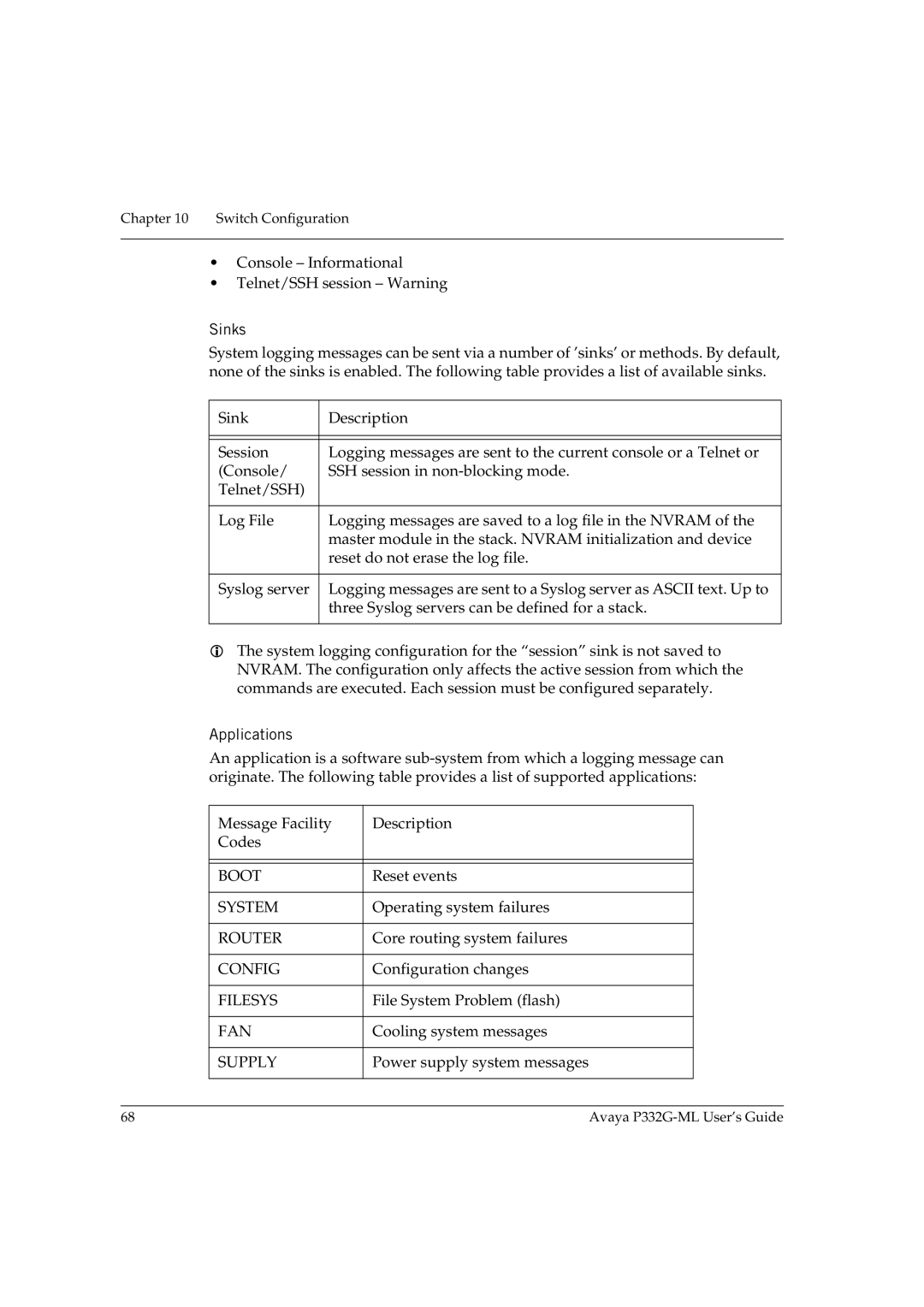
Chapter 10 Switch Configuration
•Console – Informational
•Telnet/SSH session – Warning
Sinks
System logging messages can be sent via a number of ’sinks’ or methods. By default, none of the sinks is enabled. The following table provides a list of available sinks.
Sink | Description |
|
|
|
|
Session | Logging messages are sent to the current console or a Telnet or |
(Console/ | SSH session in |
Telnet/SSH) |
|
|
|
Log File | Logging messages are saved to a log file in the NVRAM of the |
| master module in the stack. NVRAM initialization and device |
| reset do not erase the log file. |
|
|
Syslog server | Logging messages are sent to a Syslog server as ASCII text. Up to |
| three Syslog servers can be defined for a stack. |
|
|
The system logging configuration for the “session” sink is not saved to NVRAM. The configuration only affects the active session from which the commands are executed. Each session must be configured separately.
Applications
An application is a software
Message Facility | Description |
Codes |
|
|
|
|
|
BOOT | Reset events |
|
|
SYSTEM | Operating system failures |
|
|
ROUTER | Core routing system failures |
|
|
CONFIG | Configuration changes |
|
|
FILESYS | File System Problem (flash) |
|
|
FAN | Cooling system messages |
|
|
SUPPLY | Power supply system messages |
|
|
68 | Avaya |
